-
About
- About Listly
- Community & Support
- Howto
- Chrome Extension
- Bookmarklet
- WordPress Plugin
- Listly Premium
- Privacy
- Terms
- DMCA Copyright
- © 2010-2024 Boomy Labs
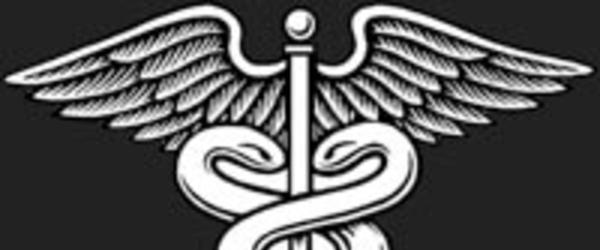

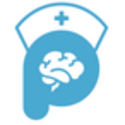 Kourosh Parsapour
Kourosh Parsapour
Listly by Kourosh Parsapour
Here are a list of medical innovations that have changed medicine.
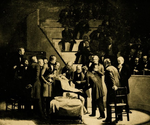
Anesthesia For centuries patients had to endure terrible pain and agony during surgical operations. Everything changed in 1846 when a dentist named Dr. William Morton removed a tumor from the jaw of a patient. Prior to the operation he used a sponge soaked with ether to render his patient unconscious.
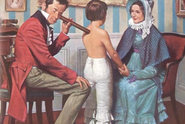
In the fall of 1816, René Laënnec was running late and took a shortcut through the courtyard of the Louvre in Paris. A group of children playing atop a pile of old timber caught his attention. One child held was holding a beam to his ear while the other tapped nails against the opposite end - transmitting sound.
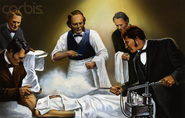
For years physicians prided themselves on operating in bloody, frock coats tainted with the detritus of operations past. The result was often rip-roaring infections, gangrene and death. This dirty practice changed thanks to a British surgeon named Joseph Lister. Lister, convinced that infections could be reduced if instruments and wounds were cleaned, began applying carbolic acid to his instruments before operating.

Explore Personal RN's hand-picked collection of Pins about Medical Innovations on Pinterest.
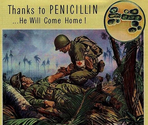
After a two-week vacation, Alexander Fleming returned to his work and spotted a culture plate of bacteria that had been left on his bench. That culture plate was the beginning of Penicillin. It would take another 11 years before patients would receive penicillin but by D-Day, June 6, 1944, the US were able to produce enough penicillin to treat all wounded British and American troops.
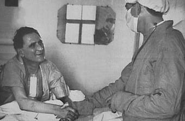
A pioneering surgeon and a brave grocer from Cape Town, South Africa would make history on Dec. 3, 1967. Dr. Christiaan Barnard would perform the first effective heart transplant by successfully removing the dying heart of a 54-year-old grocer named Louis Washkansky and replace it with a healthy heart.

On Nov. 16, 1981, the U.S. Senate confirmed Dr. C. Everett Koop, as the 13th Surgeon General of the United States. By the time he stepped down from his office in 89, Koop would be the most powerful surgeon general in US history.
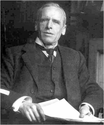
In 1902, Ernest Starling discovered secretin, a protein that is considered by many to be the 1st isolated hormone. Starling went on to define hormones as "chemical messengers, which are carried from the organ where they are produced to the organ which they affect by means of the blood stream."
For millennia, smallpox was humankind's deadliest foe, until Dr. Edward Jenner figured out a means of preventing it. Jenner observed that people who encountered cowpox became immune to the smallpox virus. And so Jenner implanted dried scabs or fresh pus containing cowpox into the arms of 8-year old Jimmy Phipps.
In the 1600's most physicians felt that the lungs were responsible for circulating blood throughout the human body. English physician, Dr. William Harvey was skeptical. Through numerous dissection and physiological experiments, Dr. Harvey discovered that heart acted like pump, circulating the blood throughout the human body as well as the brain.
In 1895, physicist Wilhelm Rontgen was working in his lab in Germany. He was testing whether cathode rays could pass through glass when he noticed a glow coming from a nearby chemically coated screen. He dubbed the rays that caused this glow X-rays b/c of their unknown nature.
While conducting research on hypothermia, John A. Hopps, began experimenting with radio frequency heating to restore body temperature. While conducting his research Hopps made an unexpected discovery: if a heart stopped beating due to cooling, it could be started again by artificial stimulation using mechanical or electric means.
Nearly 42 yrs ago, the 1st artificial heart was implanted in a history-making operation at St. Luke's Hospital in Houston. Dr. Denton Cooley performed the op, and the device, developed by Dr. Domingo Liotta, was implanted in a 47-yr-old patient with severe heart failure.
Percy Lavon Julian, a pioneering chemist who overcame the obstacles of segregation to ascend to international notoriety. Julian synthesized chemicals from plants to make medicine, which included treatment for glaucoma and other inflammatory illnesses. As an African-American, Julian was denied opportunities to work for large corporations throughout his career, though he went on to hold more 100 patents and received 19 honorary doctorates.
The discovery of vitamins was a major scientific achievement in our understanding of health and disease. In 1912 Sir Frederick Hopkins demonstrated in a series of experiments that diets consisting of pure proteins, carbohydrates, fats, minerals and water fail to support growth.
Most medical authorities view Dr. Paul Dudley White as the founder of preventive cardiology. Appointed as President Dwight D. Eisenhower's physician following his heart attack in 1955, White was a staunch advocate of exercise, diet, and weight control in the prevention of heart disease.
Edward Mellanby was tasked with exploring the cause of rickets, a childhood malady characterized by a softening of bones. His work had shown that dogs developed rickets if kept indoors & fed a restricted diet, but recovered quickly if cod liver oil was added to their diet.
Before the discovery of insulin diabetes was a feared disease that often led to death. In 1922 Dr. Frederick Banting figured out how to extract insulin from a dog's pancreas. Banting injected the insulin into 14 yr old Leonard Thompson, whose body was so ravaged by diabetes that he weighed only 65lbs.
In 1953 Dr. John Gibbon, Jr., with the help of his heart-lung machine, closed a septal defect of the heart of 18 yr old Cecelia Bavolek. This was the 1st successful intercardiac surgery of its kind performed on a human patient.
By the turn of the 20th Century, blood transfusions were becoming common but if a patient needed blood, a live donor had to give it, directly and immediately. Could blood be stored for longer than a few hours? In 1930, Dr. Bernard Fantus, began a series of experiments on how to increase the storage time for blood.
The origin of AIDS has presented numerous puzzles to scientists since the first recognized cases appeared. In 1983, Dr. Luc Montagnier found a suspect virus he called LAV. Meanwhile, Dr. Anthony Gallo had proposed a theory that a retrovirus was the cause of AIDS.
6LL3, also known as Dolly, "the world's most famous sheep was" was the 1st mammal to have been cloned from an adult cell. The technique used to clone Dolly is known as somatic cell nuclear transfer.
In 2007, scientists discovered how to use human skin cells to create embryonic stem cells. Embryonic stem cells can become any kind of cell in the body, offering the promise of replacement tissues to treat various ailments. While these skin cells didn't have every attribute of the stem cells, they also didn't carry the moral quandary of those cells.
Every yr millions of couples try to conceive a child, yet many find they cannot. In 1977, Dr. Steptoe & Dr. Edwards, placed a fertilized egg back into their patient, Lesley Brown's, uterus.
